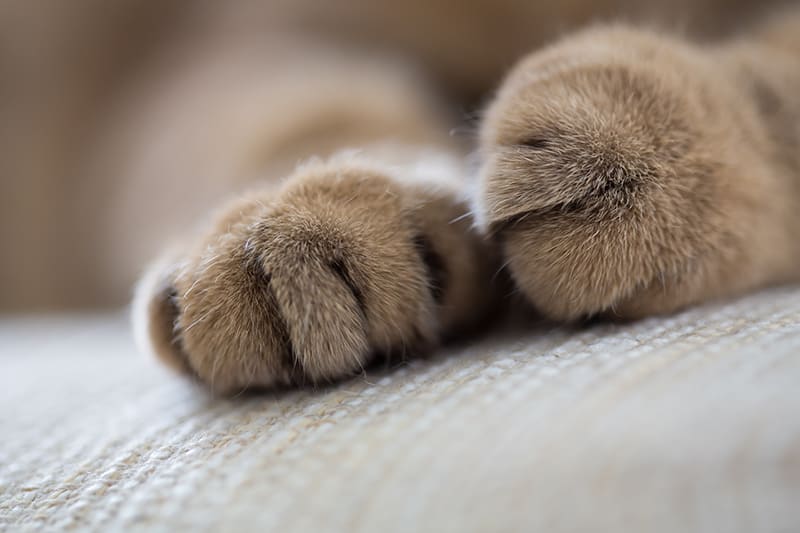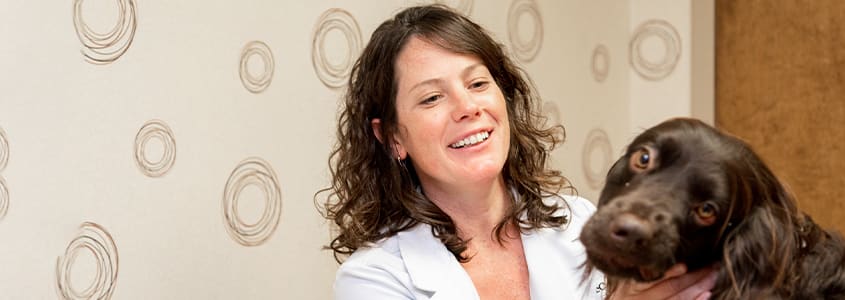Why is my cat limping but not in pain?
Your pet isn't able to tell you how they're feeling, or what is hurting them, which can make figuring out why your cat is limping a real challenge. Cats can limp for many reasons whether they are limping from their back leg, or limping from their front leg such as getting something stuck in their paw, a sprain, a break, an ingrown claw or a tiny sliver.
It may seem odd but it is possible that your cat may be experiencing significant pain but not look like. Cat's instinctually hide when experiencing pain as a defence mechanism to protect themselves against predators. So it's important to remember that if your cat is limping it's a sign that they are experiencing pain, even if they don't look like it.
Taking your cat to the vet if they have a limp could help to avoid an infection developing or keep their condition from worsening. The cause of your cat's limp might not be easy to spot but the treatment could be as simple as trimming their claws or removing a tiny splinter from their paw.
That said, it's important to monitor your animal's health regularly, and watching how they walk normally is a part of that. Always keep an eye out for lumps, bumps, swelling, redness, and open wounds. If you see any of these contact your vet. We believe that it's always best to err on the side of caution when it comes to your cat's health.
Why is my cat limping all of a sudden?
Limping in cats often comes on suddenly. A few of the most common reasons why cats suddenly begin limping include:
- Something stuck in their paw
- Sprained or broken leg caused by trauma (being hit, falling, or landing wrong)
- Walking across a hot surface (stove, hot gravel, or pavement)
- Ingrown nail/ claw
- Being bitten by a bug or other animal
- Infected or torn nail
- Arthritis
What should I do if my cat is limping?
If your cat is limping try running your fingers down the affected leg watching your cat's reactions and feeling for any sensitive areas. Keep an eye out for open wounds, swelling, redness, and in extreme cases dangling limbs. Start at your cat's paw and gently work your way up.
If you discover something such as a thorn or splinter gently pull it out with tweezers and clean the area with soap and water. Be sure to keep an eye on the area to ensure that an infection doesn't take hold as the puncture wound heals. If overgrown nails are the issue simply trim your cat's nails as usual (or have it done by your vet).
If you are unable to figure out the cause of your cat's limp and it continues beyond a day or two, it's time to make an appointment with your vet.
It may sound strange but it can be challenging to tell if your cat's leg is broken. This is because the symptoms of a fracture can mirror those of other injuries such as a sprain (swelling, a limp, leg being held in an odd position, lack of appetite).
Leading up to your cat's vet appointment you should try to limit your cat's movements in order to keep them from causing further injury or making it worse. Do this by keeping them in a room with low surfaces, or putting them in their carrier. Make sure they are comfortable by providing them with a comfy place to sleep/kitty bed and keep them warm with their favourite blankets. Continue to monitor their situation.
Should I take my cat to the vet for limping?
It is always a good idea to take your cat to the vet for limping to help prevent infection and to get a proper diagnosis. If any of the following situations apply to your cat make an appointment with your vet:
- You can't identify the cause
- They have been limping for more than 24 hours
- There is swelling
- An open wound
- The limb is clearly broken
- Your cat is hiding
- Your cat is howling or showing other clear indications of pain
Don't wait 24 hours if there is a visible cause such as bleeding, swelling or the limb is hanging in a strange way, call your vet immediately to prevent infection or a worsening condition. You should also call your vet if you do not know how to handle the situation, your vet will be able to give you advice on the actions you should take next.
Note: The advice provided in this post is intended for informational purposes and does not constitute medical advice regarding pets. For an accurate diagnosis of your pet's condition, please make an appointment with your vet.
Is it time to book a dental appointment for your cat? Contact our Greensboro vets today to book an oral health checkup for your cat at Guilford-Jamestown Veterinary Hospital.
Looking for a vet in Greensboro?
We're always accepting new patients, so contact our veterinary hospital today to book your pet's first appointment.
Related Articles View All
What happens during a routine pet exam?
Routine wellness exams are a proactive way to help safeguard your pet's long-term health and vitality. Why should you take your healthy pet to the vet? What happens during a pet health wellness exam? Find out.
How much does an emergency vet visit cost?
Emergency veterinary care can be costly, but planning ahead allows you to make decisions about your pet's care based on their needs rather than financial restrictions. Today, we look at the cost of emergency vet care, and how to be ready if your pet needs emergency treatment.
Does my cat have asthma?
The treatment for asthma in cats can seem daunting for many pet parents. But your veterinarian can lead you through the diagnosis and treatment process, to help get your cat breathing easier.


